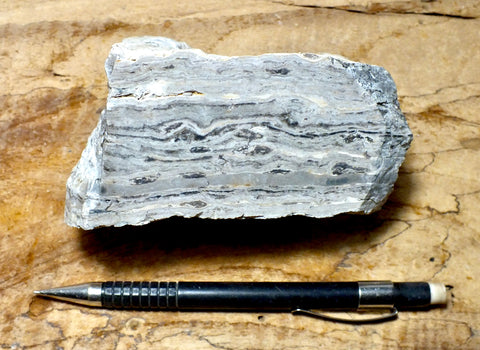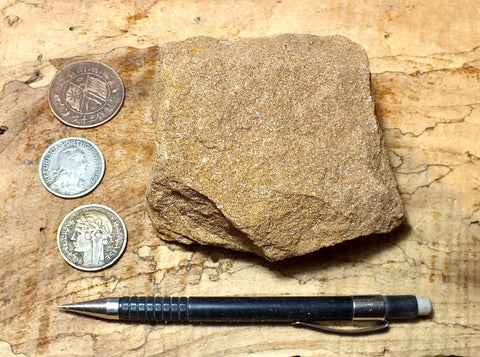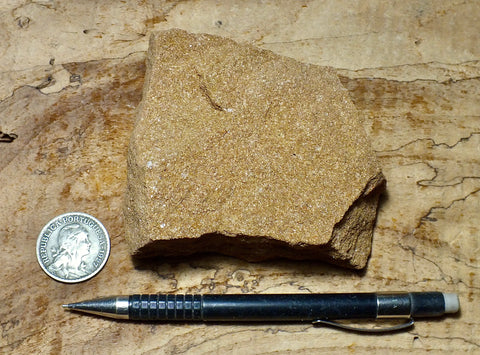chert - banded chert from the Monterey Formation, California - hand/display specimen
$ 12.50
Chert can form in more than one way. Biochemical chert can form by solution and reprecipitation of the silica found in the shells of diatoms. This type of chert is a sedimentary rock. Chert can also form as a direct precipitation from hydrothermal fluids rich in silica. In this case it is often considered a cryptocrystalline variety of quartz like chalcedony and is thought of as a mineral. This chert is a facies of the Miocene Monterey Formation and is biochemical.
The Monterey Formation is a diatomaceous accumulation of sediments in basins that were adjacent western North America between 15 and 5.5 million years ago. It is a part of a circum-Pacific ring of diatomaceous sediments that resulted from major changes in paleoclimate, coastal upwelling and areas of biosiliceous productivity that occurred at that time. Intensified coastal upwelling resulted in high plankton productivity and rapid deposition of siliceous ooze from the constant rain of dead diatoms and radiolarians falling to the sea floor.
The sediments that accumulated farthest from the coast were primarily calcareous and siliceous. These sediments were rapidly and deeply buried, with the biogenic silica dissolved and reprecipitated as more stable opal and eventually, with time and increased temperature, forming porcelanite, chalcedony and chert.
The conversion of sediments into sedimentary rock is called diagenesis. Where clay is a larger component of the sediments, diagenesis forms porcelanite, which has a silica content of 50 to 85%. With a silica content of 90 to 95%, the rock is chert. Biochemical chert such as this is a sedimentary rock. The tan chert bands are opal-CT, made up of essentially a disordered layering of cristobalite and tridymite stacking units. The dark chert bands are quartz-phase chert.
Both sides of this specimen are shown. One side is cut flat.
This banded chert was collected in San Miguelito Canyon, near Lompoc in Santa Barbara County, California. Imerys S.A. operates the world’s largest diatomite mine there. Field photo shows outcrop.
Select a specimen: When more than one specimen is shown, you can select a particular specimen by telling us what is in the photo with it, a black and silver pen, a black mechanical pencil, a blue and silver pen, or one of those plus some number of coins, or you can let us make the selection.
Shipping: By Priority Mail or USPS Ground Advantage, whichever is cheaper, unless we find a better rate. Click > here < for shipping rates. See comment at Note! Use back button to return to this page.
Making multiple purchases? Click on the "combine shipping" button in the shopping cart. We'll send an invoice with combined shipping. A link in that invoice will bring you back to checkout, no hassle.







